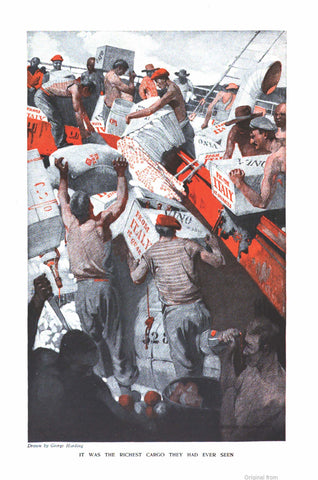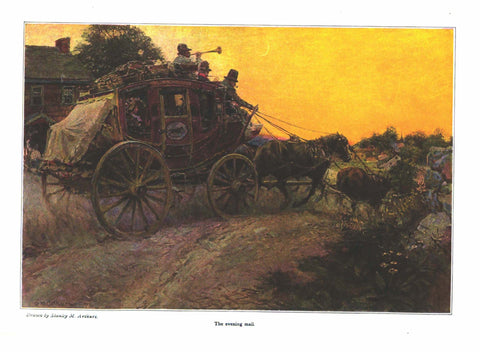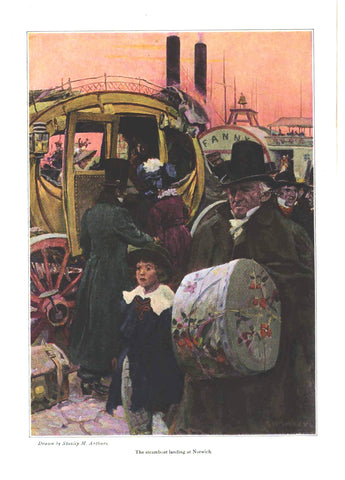Stanley Arthurs story illustration for Scribner's Magazine (1908): a beautifully framed antique
$175.00
"A Wayside Passenger"
IMAGE INFORMATION
Image Size: H 9.00” x W 6.00”
Matted & Framed: H 16.00” x W 12.00”
Framed Price: $185.00
Packaging and shipping approximately $22.00
SMA produced this illustration in circumstances similar to those in 1899. His studio had moved by then into the school building PH built in 1900, and he was sharing space with HP’s other “righthand man,” Frank Schoonover. But Pyle was only a few yards away, working methodically through orderly days in his French Street atelier. In the morning on his way to work, and in the evening on his way home, he would stop in the studios of his students and critique their work.
No doubt the pieces SMA produced for his Scribner’s article pleased his teacher. The canvas was filled with natural and historical detail. The moment the artist portrayed contained physical and mental action, and viewers were drawn into the scene by its emotional power. Finally, through the use of slanting lines and contrasting lights and darks, SMA conveyed a Pylesque sense of impending motion. In the next instant the farewell embrace would be over, the passenger would be off, and the viewer would be wondering what happened next!
The article in which this illustration appeared was the first of two stories SMA wrote and illustrated. One supposes the pictures gained vitality because the artist also created the narrative. Pyle’s greatest instruction to his students was to place themselves within the narrative and make themselves part of the story they were depicting. The moment could not have been, in other words, more vivid in the artist's imagination.
By 1908, image reproduction technology had advanced into the Age of Color, and it was preferable to publishers and readers alike to see bright colors in story illustrations. The artist complied by creating his scene with a red and yellow palette rather than the dull earth tones Pyle’s students used a few years earlier. SMA’s picture was reproduced using a four-color halftone photolithographic process. Since the colors are bright and there are no bleed overs, we can commend the printer as well as the artist on this reproduction.








